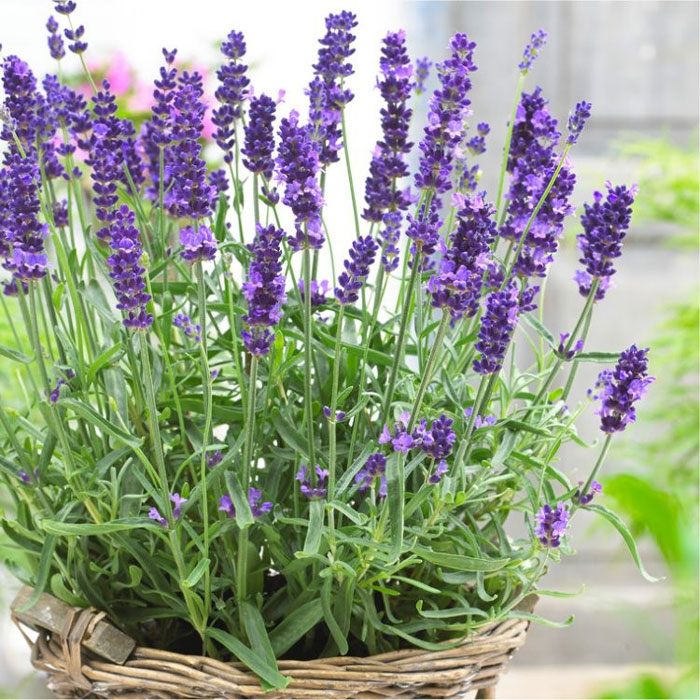Grow Lavender in Pots: Home Guide

Imagine stepping out onto your balcony or patio and being greeted by the soothing scent of lavender. Picture the delicate purple flowers swaying gently in the breeze, transforming your urban space into a serene oasis. Growing lavender in pots at home is not only possible but also incredibly rewarding. Whether you're a seasoned gardener or a novice looking to dip your toes into container gardening, this guide will walk you through every step of the process. Let's dive in and discover how to grow lavender in pots at home.
Why Grow Lavender in Pots?
Growing lavender in pots offers numerous benefits. It's perfect for those with limited space, such as apartment dwellers or urban gardeners. Container gardening allows you to control the soil quality and drainage, which are crucial for lavender's health. Plus, potted lavender can be moved indoors during colder months, ensuring year-round enjoyment.
Choosing the Right Lavender Variety
Before you start, it's essential to choose the right lavender variety for your pot. English lavender (Lavandula angustifolia) is a popular choice for its fragrance and hardiness. Spanish lavender (Lavandula stoechas) is also suitable for pots, with its showy flowers and compact size. Consider your climate and the amount of sunlight your pot will receive when making your selection.
Selecting the Perfect Pot
The right pot can make all the difference in the success of your lavender plant. Opt for a container that is at least 12 inches in diameter and depth. Terracotta pots are ideal because they allow for good drainage, which lavender loves. Ensure your pot has adequate drainage holes to prevent waterlogging.
Preparing the Soil
Lavender thrives in well-draining, sandy soil. A mix of equal parts potting soil, perlite, and sand will provide the perfect growing medium. Avoid using heavy, water-retaining soils, as they can lead to root rot.
Planting Your Lavender
Once you have your pot and soil ready, it's time to plant your lavender. Fill your pot about two-thirds full with your soil mix. Gently remove the lavender plant from its nursery pot and place it in the center of your container. Fill in around the plant with more soil, ensuring the root ball is fully covered. Water the plant thoroughly, allowing the water to drain out of the pot.
Lavender Plant Care
Watering
Lavender is drought-tolerant and prefers to be on the dry side. Water your plant deeply once a week, allowing the soil to dry out between waterings. Overwatering can be fatal to lavender, so err on the side of caution.
Light Requirements
Lavender loves the sun. Place your pot in a location that receives at least 6-8 hours of direct sunlight daily. If you're growing lavender indoors, a south-facing window is ideal.
Fertilizing
Lavender is not a heavy feeder and can thrive with minimal fertilization. A light application of a balanced, slow-release fertilizer in the spring is usually sufficient. Avoid over-fertilizing, as this can lead to excessive foliage growth at the expense of flowers.
Pruning
Regular pruning is essential for maintaining the health and shape of your lavender plant. Prune back the plant by about one-third after it has finished flowering. This encourages bushier growth and more flowers the following year.
Troubleshooting Common Issues
Yellowing Leaves
Yellowing leaves can indicate overwatering or poor drainage. Ensure your pot has adequate drainage holes and reduce watering frequency.
Wilting
Wilting can be a sign of underwatering or overwatering. Check the soil moisture and adjust your watering schedule accordingly.
Pests and Diseases
Lavender is generally pest-resistant, but it can be susceptible to spider mites and aphids. Regularly inspect your plant for signs of pests and treat with an insecticidal soap if necessary.
Enjoying Your Home Lavender
Once your lavender is established, you can enjoy its fragrant flowers and foliage. Harvest the flowers when they are just beginning to open for the best scent. Use them in sachets, potpourri, or even culinary dishes. The possibilities are endless!

Conclusion
Growing lavender in pots at home is a rewarding experience that can transform your space into a fragrant oasis. With the right variety, pot, soil, and care, you can enjoy the beauty and benefits of lavender year-round. So, why not give it a try? Your senses will thank you!
FAQs
Can I grow lavender indoors?
Yes, you can grow lavender indoors, but it requires a bit more care. Ensure your plant receives plenty of sunlight and has good air circulation. Avoid overwatering and provide a well-draining soil mix.
How often should I water my potted lavender?
Water your lavender deeply once a week, allowing the soil to dry out between waterings. Lavender is drought-tolerant and prefers to be on the dry side.
What type of soil is best for lavender?
Lavender thrives in well-draining, sandy soil. A mix of equal parts potting soil, perlite, and sand provides the perfect growing medium.
How do I prune my lavender plant?
Prune your lavender plant by about one-third after it has finished flowering. This encourages bushier growth and more flowers the following year.
What should I do if my lavender leaves are turning yellow?
Yellowing leaves can indicate overwatering or poor drainage. Ensure your pot has adequate drainage holes and reduce watering frequency.

With these tips and tricks, you're well on your way to growing beautiful, fragrant lavender in pots at home. Happy gardening!
0 Response to "Grow Lavender in Pots: Home Guide"
Post a Comment